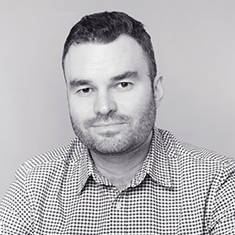Ear tube surgery
Look for appointment timesMiddle ear drainage or tympanic membrane shunting is a procedure in which an opening is made in the tympanic membrane and a soft plastic tube or shunt is inserted to ventilate the middle ear. The shunt stays in the ear for 2-12 months and usually comes out on its own. For children, tympanic membrane shunting is often performed together with adenoid removal surgery.
When is it necessary to operate?
The indication for tympanic membrane shunting is the accumulation of fluid in the middle ear, which can result in hearing loss because the chain of the tympanic membrane and the ossicles cannot oscillate properly to receive sound and transmit the sound wave.
The operation can be performed under local anesthesia (in adults) or general anesthesia (in children).
Postoperative period:
The patient remains for post-operative observation for 2-4 hours, then can go home.
• A secretion (blood mixture) may be released from the ear.
• You can eat and drink for 1-2 hours after the operation.
NB! If the shunt is in the ear, water must not enter the ear, so use special earplugs (available in pharmacies) when washing your head and when taking a bath, shower, or swimming. If water enters the middle ear through the shunt, purulent otitis media may follow, requiring immediate antibacterial treatment.
• Hearing improves quickly after surgery. It can startle you at first because the sounds seem unusually loud. Cracking or scratching sounds may also be heard in the ear for some time after surgery.
• The shunt or drain usually comes out unnoticed after 2-12 months.
• Follow-up is agreed upon with the doctor
Possible complications:
-
- Infection entering the middle ear through the shunt – antibiotic treatment is prescribed.
-
- The shunt is removed from the ear too early – if necessary, repeat surgery is performed
-
- the shunt does not remove by itself – the doctor removes the shunt with a simple procedure (under anesthesia in children)
-
- Scarring of the tympanic membrane – after the shunt is removed, a small scar may remain on the tympanic membrane, which usually does not cause problems
-
- In very rare cases, the hole in the tympanic membrane does not grow back after the shunt is removed – it requires surgery to repair the tympanic membrane.
-
- In the first days after the operation, the body temperature may rise or there may be a discharge from the ear. If necessary, use a fever reducer and contact our toll-free telephone number 1500 for advice. If necessary, you will be referred to a doctor for further treatment.
Service providers

Mari Rõigas
Ear-nose-throat doctor | Otorhinolaryngologist
Ene Miller
Otolaryngologist (ear, nose and throat specialist)
Erekle Dzotsenidze
Ear-nose-throat doctor
Epp Pool
Otorhinolaryngologist
Raiko Tiganik
Otolaryngologist
Linda Sõber
Otolaryngologist
Anu Metsar
Otolaryngologist (ear, nose and throat specialist)
Oliver Laidroo
OtorhinolaryngologistWe provide this service
Price
Ear-nose-throat doctor consultation
Drainage of middle ear
Uni- or bilateral drainage of middle ear with adenoidectomy
Ear-nose-throat doctor consultation
Drainage of middle ear
Drainage of one or both middle ears with adenoidectomy
We have several payment options. Read more HERE.
BOOKING
Ear tube surgery
